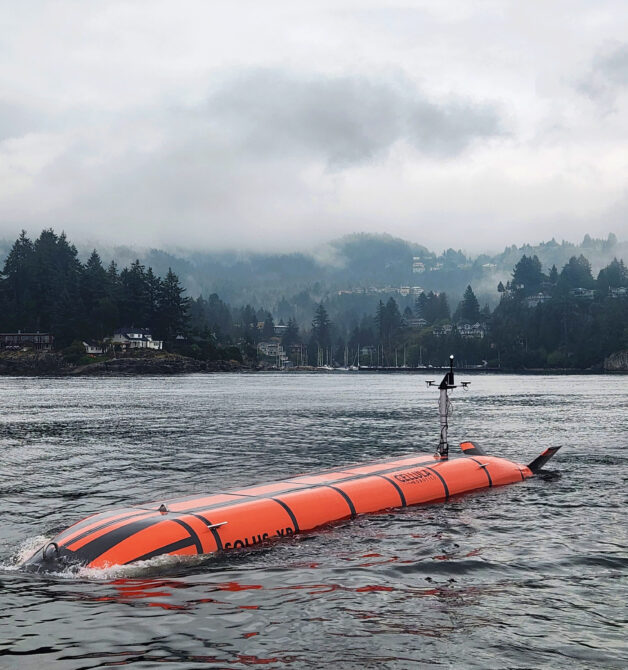
Leading the underwater robotics revolution
By Sohail Kamal, EP&T West Coast Correspondent
Electronics autonomous B.C. cellula marine robotics subsea underwaterCellula Robotics charts the course from British Columbia
In the heart of British Columbia (BC), a technological renaissance is unfolding. Cellula Robotics, a beacon of innovation in the subsea robotics industry, is charting a course for the future, leveraging BC’s unique ecosystem to drive global change in underwater surveyance. West Coast Reporter recently had the opportunity to connect with Alex Johnson, Cellula’s director of autonomous underwater vehicles (AUV) products, about Cellula’s vision, the challenges in the arctic, and the advantage of being based in BC.
BC stands as a global hub for underwater robotics and technology. “The worldwide demand for subsea robotics is surging,” says Johnson. “Canada needs to invest heavily in this technology, especially for offshore renewable energy, telecoms cable inspection, security, and defence.”

Cellula aims to redefine subsea security with its autonomous robotics. Source: Cellula Robotics
Given Canada’s expansive territories and sparse population, robotics and autonomy offer a unique solution to the challenges on industry and defence. “With our leading position in subsea robotics, we’re poised to seize global opportunities, especially when industries or defence sectors decide to invest seriously in these technologies,” Johnson adds.
Cellula’s vision
Cellula’s mission is clear: to be the world leader in trusted, autonomous marine robotic solutions. “We see vast opportunities in both the commercial and defence sectors. Our goal is to provide cost-effective solutions to challenges in sustainable energy and security,” says Johnson. Cellula believes that their technology and experience can redefine subsea security by deploying autonomous robotics solutions on a large scale.
Cellula Robotics sets itself apart through the innovative use of hydrogen fuel cell technology, particularly in their Solus-XR XLUUV (Extra-Large Unmanned Underwater Vehicle). Hydrogen fuel cells are the most efficient, air-independent power source for large AUVs. This technology offers exceptional energy density and lightweight properties, enabling their vehicles to outperform competitors in terms of range and capabilities: “Hydrogen is energy-dense and lightweight, allowing our vehicles to outperform competitors in terms of range and efficiency,” Johnson explains. The hydrogen fuel cell not only enhances the vehicle’s efficiency but also expands its range, enabling port-to-port missions without the need for the support of a service ship, thus reducing the total carbon footprint even further.
Addressing Arctic challenges
The Canadian Arctic, with its cold, remoteness, and ice, poses significant challenges. “The Arctic holds strategic importance for shipping, resources, sovereignty, climate change, and defence,” Johnson points out. Solus-XR is designed to operate in GPS at communication denied environments, like below the ice, autonomously. Its design, rooted in Canada’s history of deploying AUVs under Arctic ice, ensures it can function with minimal human interaction and infrastructure.
The BC advantage
Being based in BC offers Cellula numerous advantages. “This region is a hub for marine robotics technology, and we’ve benefited immensely from the talent pool here,” says Johnson. Being in close community with other marine robotics companies boosts collaboration, knowledge sharing, and a vibrant ecosystem for this technology.
Additionally, BC’s geography provides easy access to test locations for AUVs. But looking ahead into 2024, Johnson anticipates challenges: “Recruiting experienced personnel is a hurdle. Government and commercial procurement processes are slow, and inflationary pressures coupled with supply chain issues are constant battles.”
However, inflationary pressure and supply chain challenges are affecting all companies globally, but with their innovative prowess and commitment to excellence, Cellula Robotics is positioned to overcome these obstacles.
Cellula Robotics is at the forefront of subsea robotics innovation, driven by their vision of sustainable, autonomous marine solutions. As BC continues to thrive as a hub for underwater technology, companies like Cellula Robotics are paving the way for a brighter, more sustainable future in the realm of subsea robotics, and hopefully, they will safeguard the future of underwater exploration and security.
To learn more, visit https://www.cellula.com.
——————————
Sohail Kamal is EP&T’s West Coast correspondent.
sohail@nextgear.ca
